SugarLoaf Great Helmet
The tall, pointed top of the Sugarloaf offered a much better glancing surface than
the older flat-tops, allowing blows from sword, mace, or axe to be harmlessly
deflected.This medieval helmet was used from about 1275-1300 A.D.This is an
authentic reproduction of the Sugarloaf Great Helm.It is made of hand-forged 18
gauge, low carbon, A-36 mild steel. This metallurgical composition provides
excellent resilience, durability and will polish to high sheen.
The accents are all real, C-854 brass, not elctro-plated. They also polish to a
mirror finish . In its simplest form, the great helm was a flat-topped cylinder of
steel that completely covered the head and had only very small openings for the
eyes and mouth. Later designs gained more of a curved design, particularly on the
top, to deflect or lessen the impact of blows.The great helm ultimately evolved
from the nasal helmet, which had been produced in a flat-topped variant with a
square profile by about 1180. From this type of helmet an intermediate type,
called an ‘enclosed helmet’ or ‘primitive great helm’, developed near the end of
the 12th century. In this helmet the expansion of the nasal produced a full faceplate, pierced for sight and breathing. This helmet was largely superseded by the
true great helm by c. 1240. later variant with a more conical top is known as a
‘sugarloaf helm’. In Spanish they are called yelmo de Zaragoza, referring to
Zaragoza where they were introduced for the first time in the Iberian
peninsula.Although the great helm offered vastly superior protection than
previous helmets, such as the nasal helm and spangenhelm, it limited the wearer’s
peripheral vision, and in addition to being heavy, the mass-produced form (flattopped without ventilation holes) provided little ventilation and could quickly
overheat in hot weather. Knights usually wore the great helm over a mail coif
(hood) sometimes in conjunction with a close-fitting iron skull cap known as a
cervelliere. The later development of the cervelliere, the bascinet, was also worn
beneath the great helm; men-at-arms would often remove the great helm after
the first clash of lances, for greater vision and freedom of movement in melee
combat. The bascinet had a mail curtain attached, a camail or aventail, which
superseded the coif. Mail throat and neck defences such as these were made
obsolete when plate gorgets were introduced, around 1400.
The bascinet evolved from its early skull cap form to supersede the great helm for
combat. The great helm fell into disuse during the 15th century; however it was
used commonly in tournaments where a version of the great helm, the frogmouthed tilting helm, evolved.






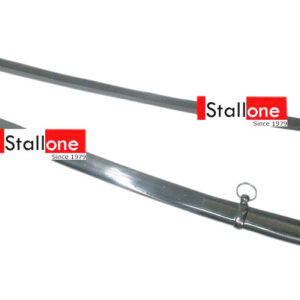
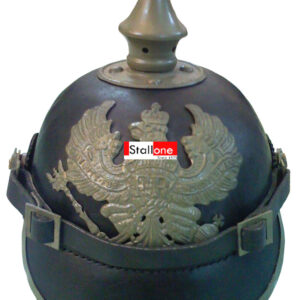
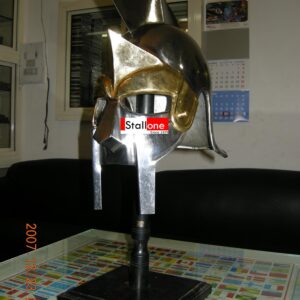
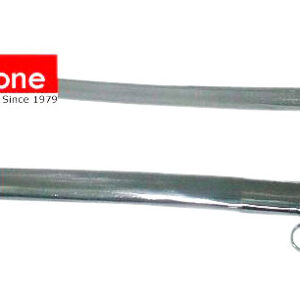
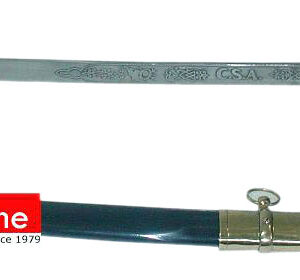
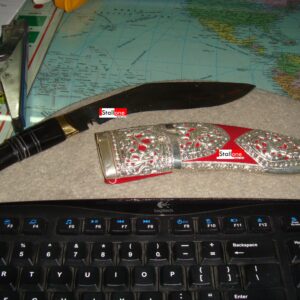
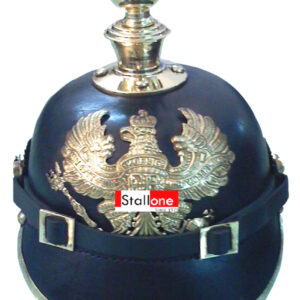
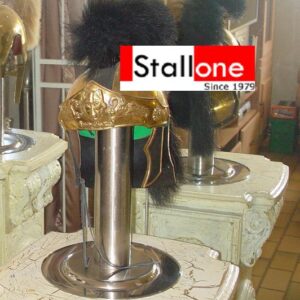
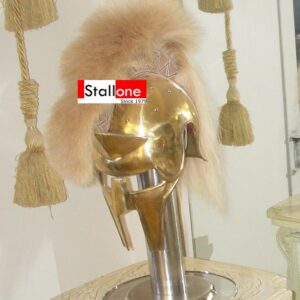
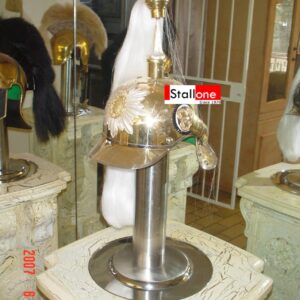
Reviews
There are no reviews yet.